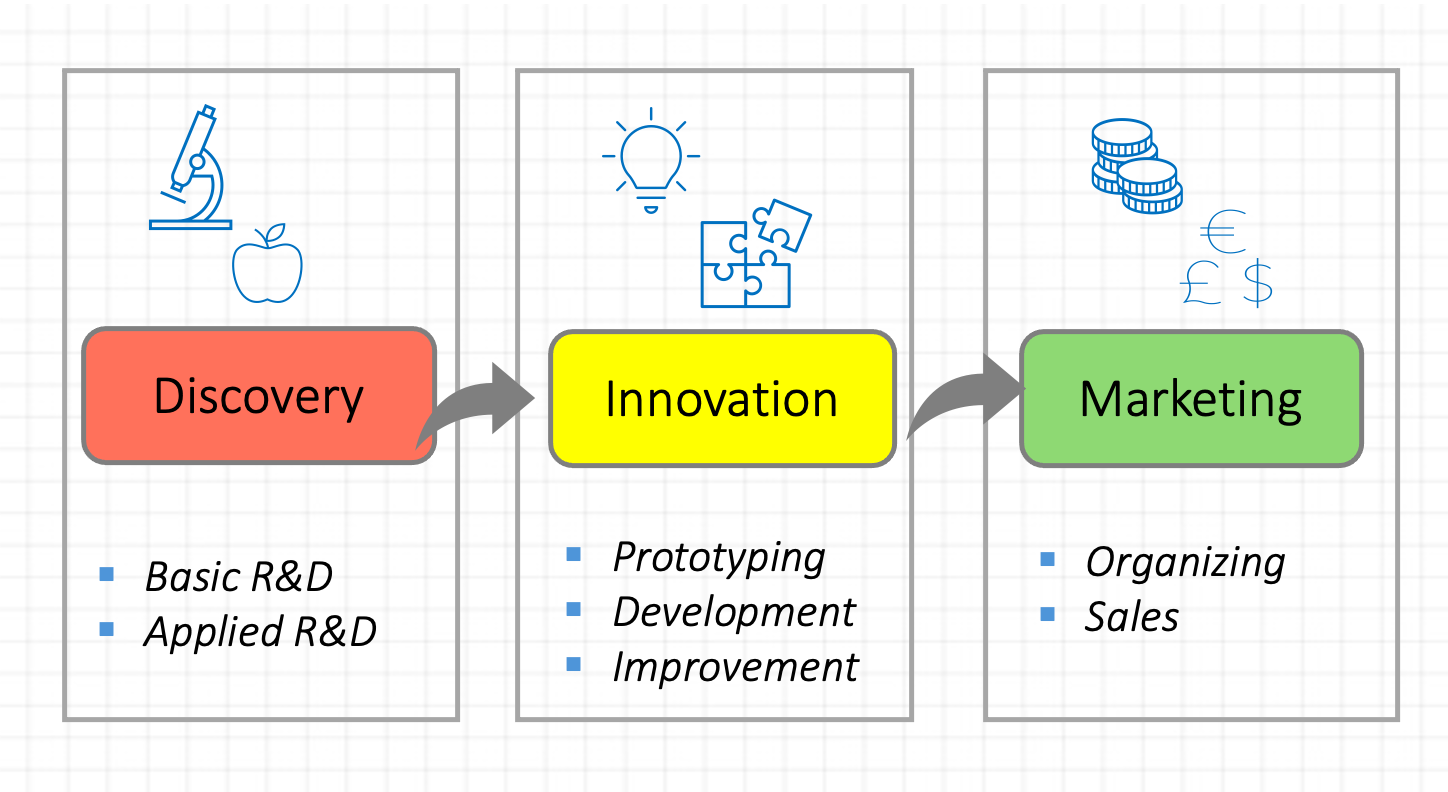Innovation – what is it really about…
Innovation is a widely admired concept, often discussed across industries, but what does it actually mean and how is it applied within organizations…?
In essence, innovation refers to the process of creating and applying new ideas, methods, or technologies to improve products, services, processes, or business models. It enables organizations to adapt to changes in their external environment, stay competitive, and enhance their internal capabilities.
All organizations, whether consciously or not, engage in some form of innovation. This may take the shape of incremental innovation—small, continuous improvements of organisation products, service or other change activities—or radical and disruptive innovation (”big bang”), which involves major breakthroughs and transformative changes in how things are done.
Research & Development
Often mentioned alongside innovation is the concept of Research and Development (R&D). Unlike innovation, which focuses on applying ideas, R&D is about systematic investigation and experimentation aimed at generating new knowledge, technologies, or products.
R&D as such normally consist of three type of approaches. (i) Basic Research– which focused on acquiring new knowledge without immediate commercial application. This type of research is often carried out at Universities. (ii) Applied Research – Directed toward a specific practical objective or goal, are also conducted at Universities, or can be done in collaboration with Research Institutions or at corporate R&D departments. Finally, we have. (ii) Development, that is using research findings to design, build, and test new products or services. As for Innovations the objective with R&D is to generate insights or technologies that can be used in innovations or to improve existing offerings.
The road to managing Innovation
Organizations that is successful in Innovation and R&D typically adopt a set of strategic principles, however, there is always a balance between the need for scientific freedom and creativity. So in order to calibrate performance of innovation and R&D initiatives – there ought to be some kind of principles of governance in place that measure progress and impact and these are often:
-
Clear and Aligned Objectives – Establish well-defined goals that align with the organization’s overall strategy. A clear sense of purpose provides direction and ensures that innovation efforts are focused and meaningful.
-
Data-Driven Decision Making – Leverage data and insights to better understand customer needs, identify emerging trends and evaluate the effectiveness of innovation initiatives. Informed decisions mostly lead to more targeted and successful outcomes.
-
Cross-Functional Collaboration – Break down silos by involving teams from different departments—such as R&D, marketing, operations, procurement and customer service. Diverse perspectives fuel creativity and lead to more robust, well-rounded solutions.
-
Strong Leadership Commitment – Senior leadership must actively support and champion innovation. Their involvement is crucial for setting the tone, securing buy-in across the organization, and ensuring long-term investment.
-
Strategic Resource Allocation – Innovation requires dedicated resources—including time, funding, and talent. Organizations must prioritize and invest wisely to give innovation the space it needs to thrive.
Finally, it’s important to stress that a culture of Creativity and Experimentation is needed in order to encourage a mindset of curiosity, risk-taking and continuous learning. Meaning foster an environment where employees feel safe to test new ideas, learn from failure and iterate toward success that beyond and is not limited to sole financial targets.
Commercialization of R&D and Market adoption
Commercialization is the multifaceted process through which the results of research and development (R&D)—including scientific discoveries, technological breakthroughs or novel methodologies—are transformed into market-ready products, services or processes that deliver tangible value to consumers, businesses and society at large. This transformation is not merely technical but also involves navigating business, legal, and market dynamics to bring innovations out of the lab and into everyday use.
At its core, commercialization acts as the critical bridge R&D and Innovation. While R&D refers to the creation of new knowledge or technologies, Innovation is the broader adoption and integration of these inventions into the market, where  they can generate economic returns and societal benefits. Without effective commercialization, many groundbreaking ideas risk remaining unused, confined to academic journals or patent archives, without contributing to economic growth or improving quality of life.
they can generate economic returns and societal benefits. Without effective commercialization, many groundbreaking ideas risk remaining unused, confined to academic journals or patent archives, without contributing to economic growth or improving quality of life.
The commercialization process typically includes several key stages:
-
Assessment and validation – Evaluating the technical feasibility and market potential of an R&D outcome to determine whether it solves a real-world problem or meets a specific market need.
-
Intellectual property (IP) protection – Securing legal rights through patents, copyrights, or trade secrets to protect the discovery and enhance its commercial appeal.
-
Product development – Refining the original idea into a viable, scalable product or service, often requiring additional engineering, testing, and prototyping.
-
Business modeling and funding – Identifying the most appropriate commercial pathway (e.g., licensing, startups, partnerships) and securing financial resources to support further development and market entry.
-
Market entry and scaling – Launching the product into the marketplace through sales, marketing, distribution, and customer engagement efforts.
-
Feedback and iteration – Using customer feedback to improve the offering and adapt to market conditions, ensuring long-term sustainability and competitiveness.
Successful commercialization not only drives economic development through job creation, revenue generation, and industry growth, but also ensures that public and private investments in R&D translate into real-world social and technological progress. It’s a strategic endeavor that aligns scientific potential with market realities, enabling innovation ecosystems to flourish.